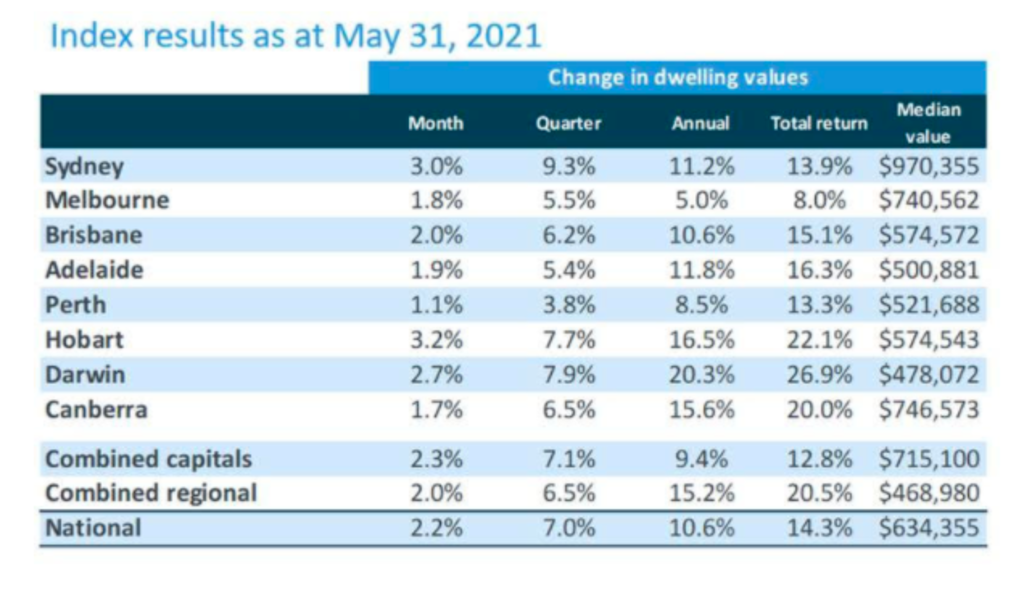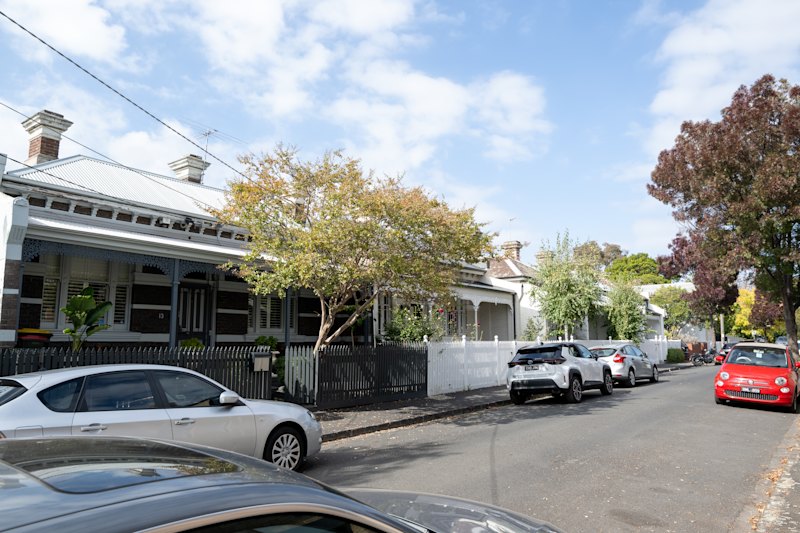Australia still in a property boom as values rise by 2.2 per cent in just one month

Australia’s property boom has picked up pace again, with national housing values rising 2.2 per cent in May, new data shows.
The latest Core Logic Home Value Index, released on Tuesday, revealed the “extreme” results – including rises of more than 3 per cent in Sydney and Hobart in the space of just one month – and a bounce back from April when the market showed early signs of a slow-down.
Corelogic research director Tim Lawless said while the results were not as record-breaking as the peak in March, they were still impressive and spoke to the strength of the boom conditions.
“We’re still seeing it’s not quite as rapid as it was in March, but 2.2 per cent is still extreme especially when you consider wages are rising by 1.5 per cent per annum,” Mr Lawless said.
Median house values were up across all the capital cities, led by Hobart, up 3.2 per cent to $574,543, and Sydney, up 3 per cent to $970,355.
Brisbane was up 2 per cent to a value of $574,572, while Melbourne was up by 1.8 per cent to $740,562. Perth saw the smallest rise of 1.1 per cent, with house values across the city sitting at $521,688.
It was the breadth of the rises that was so significant, Mr Lawless said, noting that they were rising no matter the property type or price segment.
“Values were up by more than 1 per cent across every capital city over the month, with both house and unit values lifting across the board. Of the 334 SA3 sub-regions analysed by CoreLogic, 97 per cent have recorded a lift in housing values over the past three months,” he said.
“Such a synchronised upswing is an absolute rarity across Australia’s diverse array of housing markets.”

While Sydney’s growth continued to stun the property sector, other regions throughout the country were seeing unprecedented rises.
“Although housing values are now rising the fastest once again in Sydney, at least in trend terms, the annual growth rate is generally higher across the smaller capitals, as well as regional New South Wales and regional Tasmania,” Mr Lawless said.
Darwin cracked the 20 per cent annual growth barrier in May, Mr Lawless said, with house values now 20.3 per cent higher over the past 12 months.
“For Darwin dwellings, this is the strongest annual gain on record,” he said.
Housing values across all of regional New South Wales were up 18.6 per cent while regional Tasmania values were 18.1 per cent across the year.
The rise in values in regional NSW had been led by the Richmond Valley Coastal area – including Byron Bay – which has seen a 31.5 per cent rise in house values over the past 12 months, Mr Lawless said. Likewise, the west coast of Tasmania, including Queenstown and Strahan, saw values rise by 25.1 per cent over the past year,
A better lifestyle and working from home had both played big parts in seeing people move to regional areas after the worst of COVID-19 – as had housing affordability, though it was becoming far more expensive to buy a home in some regional areas.
“There’s little difference between house prices in Byron Bay and Sydney,” Mr Lawless said.
Though some regional areas flew, others did not do as well. The weaker part of the market over the past year included regional Western Australia, where values remained the same.
Melbourne, which had a value rise of just 5 per cent over the past year, had suffered the effects of the extended lockdown, Mr Lawless said. He added that it was too early to tell whether the latest lockdown would have any significant effect on housing values.
While the housing boom continued in May, there would be some challenges to its continued growth at pace.
“We expect to see a gradual tapering in the pace of growth, and affordability will be behind that, adding to the slow-down,” Mr Lawless said.
The building of more dwellings would ease the current supply and demand issues, and a slow rise in fixed-term interest rates could also have an impact.
“There won’t be a sharp downturn until there’s a significant catalyst like interest rate rises, and the speculation is that won’t happen until at least 2024,” Mr Lawless said.
We recommend
States
Capital Cities
Capital Cities - Rentals
Popular Areas
Allhomes
More








